
What’s St. Patrick’s Day Most Popular Food Dishes in Ireland?
When March 17th rolls around, Irish families gather to celebrate their patron saint with more than just parades and festivities – they come together over traditional dishes that have been passed down through generations.
While many people associate St. Patrick’s Day with corned beef and cabbage, authentic Irish celebrations feature a variety of hearty, comforting foods that tell the story of Ireland’s long history.
From warming stews that kept farmers going through cold winters to beloved breakfast traditions that start the day right, these dishes represent more than just food – they’re a testament to Irish culture, resourcefulness, and family traditions.
Let’s find out what are St. Patrick’s Day most popular food dishes in Ireland.
1. Irish Stew
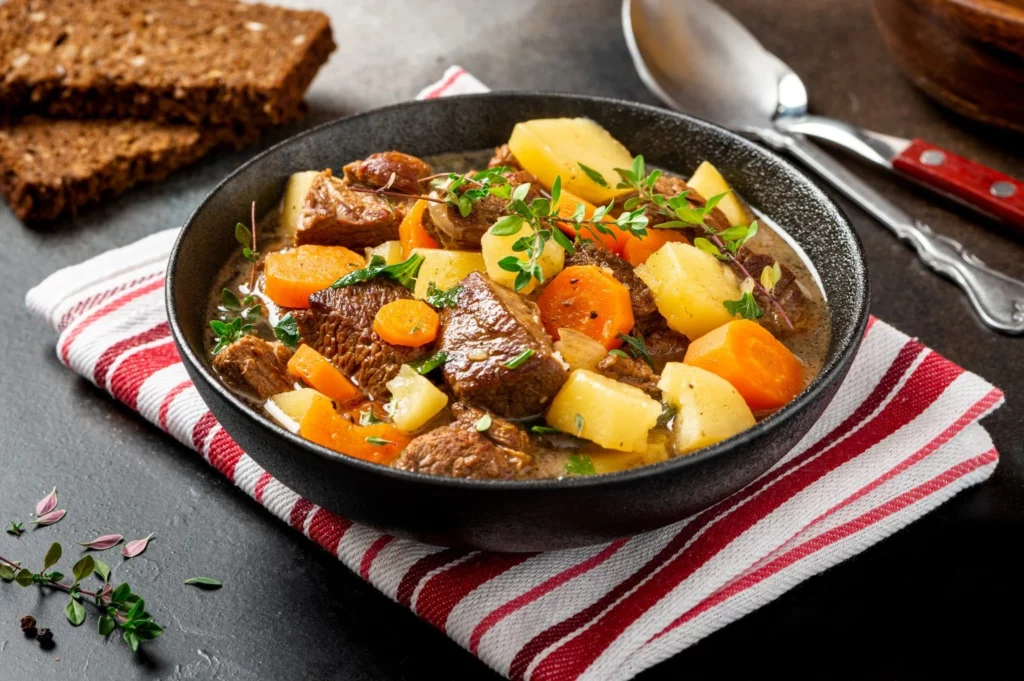
At the heart of Irish cooking sits the beloved Irish stew, a dish that speaks to the country’s farming heritage.
This centuries-old recipe started as a practical way to use readily available ingredients from the countryside. Tender lamb or mutton forms the foundation, slowly cooked with onions and potatoes until the meat falls off the bone.
The beauty of Irish stew lies in its simplicity – each family adds their own touch, but the basic ingredients remain unchanged.
In southern regions, carrots add a touch of sweetness, while some cooks include turnips for extra flavor.
Some modern versions of Irish stew have thickened broth with mashed potatoes or flour, but traditionalists prefer the natural, clear broth that lets each ingredient’s flavor shine through.
2. Full Irish Fry-Up

The Full Irish Breakfast stands as a testament to Ireland’s farming traditions, particularly in Ulster. This morning feast emerged as essential fuel for farmers facing long days in the fields.
Each plate comes loaded with traditional fadge (potato bread), perfectly fried eggs, beans, sausages, and savory rashers (bacon). The star players – black and white puddings – set this breakfast apart from its English cousin.
Every component serves a purpose, from the protein-rich sausages to the bright tomatoes and earthy mushrooms.
A steaming cup of tea or coffee completes this morning ritual. Unlike the English version, you won’t find fried potatoes here – the Irish keep it authentic with their own specific combination.
3. Irish Soda Bread
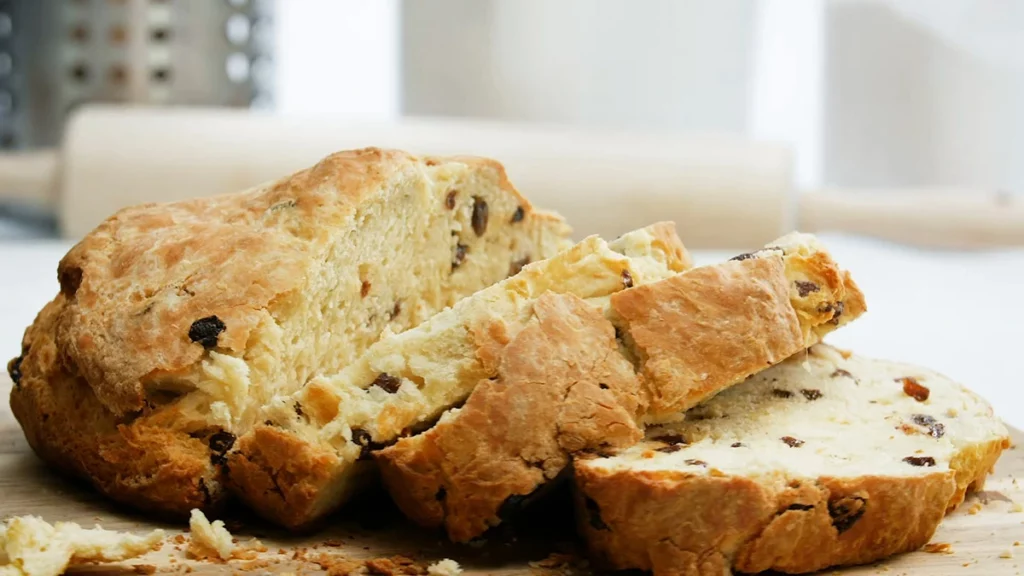
Irish soda bread tells a story of innovation during hard times. This practical bread came to life in the 1800s, when typical yeasted breads were out of reach for many families.
Made with whole-meal flour, buttermilk, salt, and bread soda (baking soda), Irish soda bread offered a quick solution for households without access to an oven.
Many families cooked their loaves in cast iron pots over open fires. Today’s versions often include raisins and caraway seeds – additions that came about through Irish-American influence.
The beauty of soda bread lies in its simplicity – it requires no kneading and rises perfectly with just baking soda. Served warm with fresh butter, it remains a popular Irish dish on St. Patrick’s Day in Ireland.
Also Read: What’s the Best Time of Year to Visit Ireland
4. Buttery Scones
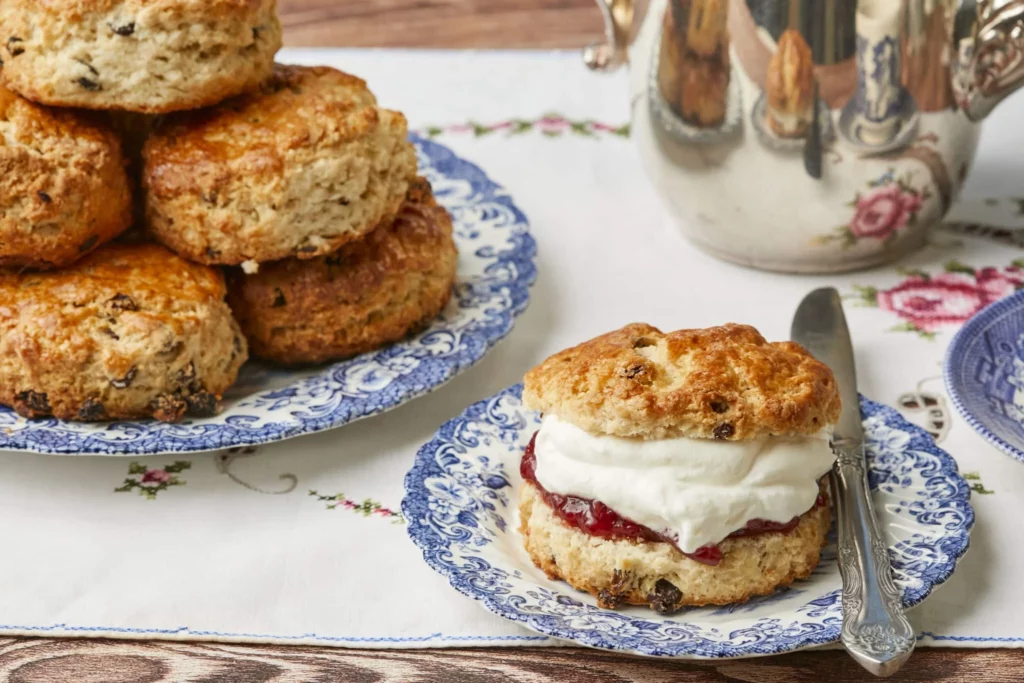
Irish scones stand apart from their fancy tea-time cousins with their straightforward, satisfying nature.
These flatbreads bring together basic pantry ingredients – potatoes, self-rising flour, butter, and salt – to create something special.
Cooks press the dough into rounds and cook them on a hot griddle until golden brown. The result? Warm, tender breads that pair perfectly with both sweet and savory toppings.
Their simplicity makes them perfect for any time of day, from breakfast to late-night snacks. These humble treats remind us that the best foods often come from the simplest ingredients.
5. Colcannon
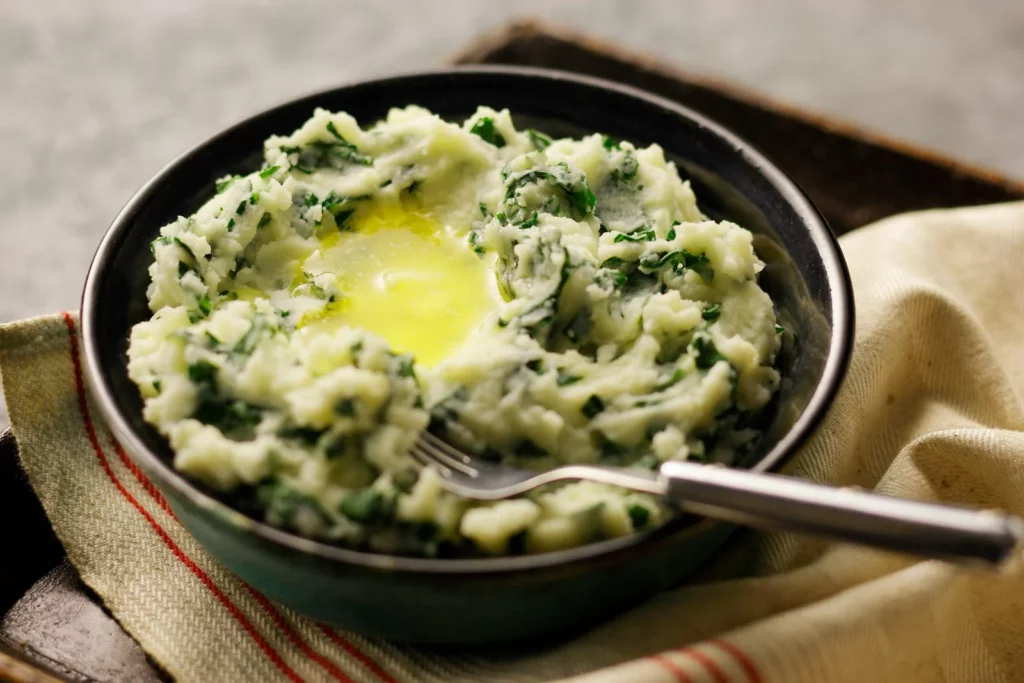
Colcannon holds a special place in Irish food history, particularly during times when potatoes formed the backbone of Irish nutrition.
This dish marries creamy mashed potatoes with either cabbage or kale, creating a filling, nutritious meal that sustained generations.
By the 1840s, potatoes had become important to Irish survival, making dishes like colcannon especially important.
Modern versions might include rich additions like sour cream and cream cheese, but the basic combination of potatoes and greens remains unchanged.
Each forkful carries the weight of history while offering pure comfort food satisfaction.
6. Apple Cake
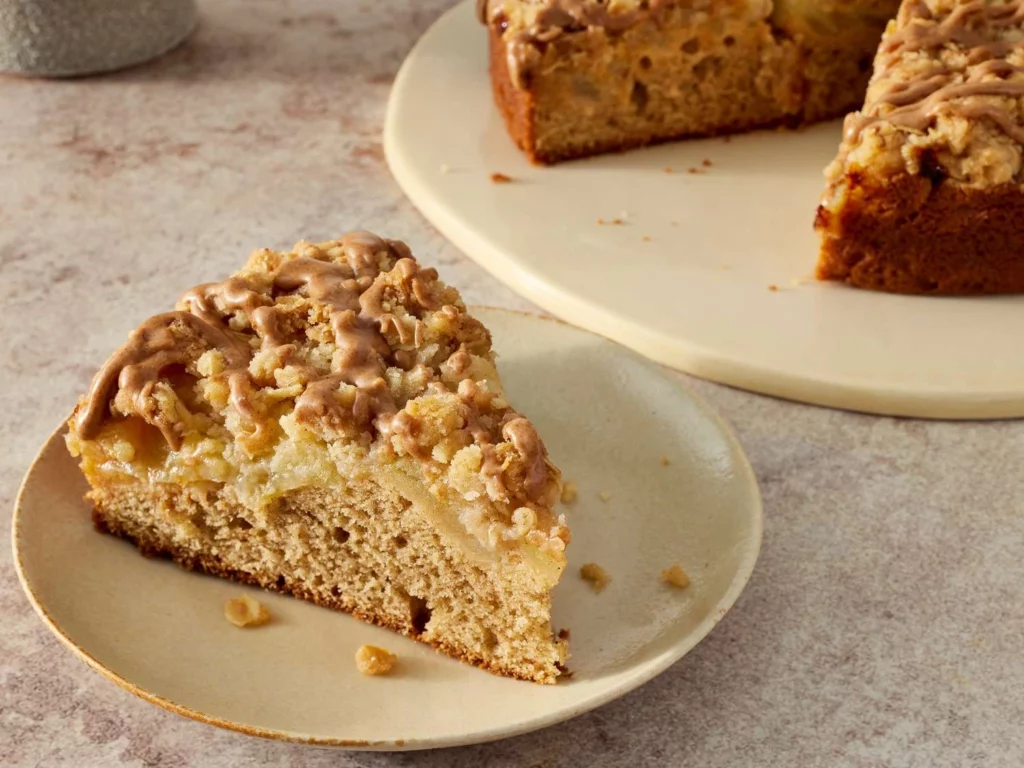
Irish apple cake represents home baking at its finest. This beloved dessert shows up at family gatherings throughout the year but holds special significance on St. Patrick’s Day.
Each region, each family, and indeed each grandmother maintains their own special recipe, passed down through generations.
The cake features Granny Smith apples in a lightly spiced batter, creating a perfect balance of flavors.
Served with silky custard sauce, Irish apple cake offers a fitting end to any celebration. The variations between recipes show how personal and cherished this dessert remains in Irish homes.



